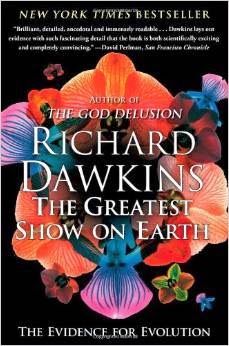1) "East to the Dawn: the Life of Amelia Earhart" by Susan Butler
Amelia Earhart captured the hearts of the nation after becoming the first woman to fly solo across the Atlantic in 1928. And her disappearance on an around-the-world flight in 1937 is an enduring mystery.
Based on ten years of research, East to the Dawn provides a richly textured portrait of Earhart in all her complexity. It’s the perfect complement to the October 2009 movie Amelia, starring Hilary Swank, Richard Gere, and Ewan McGregor.
2) "Nellie Bly: Daredevil, Reporter, Feminist" by Brooke Kroeger
Now in paperback--the acclaimed biography of Nellie Bly, the "thrilling account of a trailblazer" (Pat Morrison, Los Angeles Times Book Review). "Kroeger's biography of Nellie Bly moves at almost as fast a pace as did Bly's remarkable life."--Mindy Spatt, San Francisco Chronicle. Photos & illustrations.
3) "Full Tilt: Ireland to India with a Bicycle" by Dervla Murphy
4) "The Southern Gates of Arabia: A Journey in the Hadhramaut" by Freya Stark
In 1934, famed British traveler Freya Stark sailed down the Red Sea, alighting in Aden, located at the tip of the Arabian peninsula. From this backwater outpost, Stark set forth on what was to be her most unforgettable adventure: Following the ancient frankincense routes of the Hadhramaut Valley, the most fertile in Arabia, she sought to be the first Westerner to locate and document the lost city of Shabwa. Chronicling her journey through the towns and encampments of the Hadhramaut, The Southern Gates of Arabia is a tale alive with sheikhs and sultans, tragedy and triumph. Although the claim to discovering Shabwa would not ultimately be Stark's, The Southern Gates of Arabia, a bestseller upon its original publication, remains a classic in the literature of travel. This edition includes a new Introduction by Jane Fletcher Geniesse, Stark's biographer.
5) "Margaret Bourke-White: Photographer" by Sean Callahan
Here is a new volume of Margaret Bourke-White legendary work. From her earliest photographs to striking portraits to photographic essays depicting the most horrendous of social conditions, the 138 dramatic black and white photographs presented here brilliantly record the her adventurous vision.
6) "Bombay Anna: The Real Story and Remarkable Adventures of the 'King and I' Governess" by Susan Morgan
If you thought you knew the story of Anna in The King and I, think again. As this riveting biography shows, the real life of Anna Leonowens was far more fascinating than the beloved story of the Victorian governess who went to work for the King of Siam. To write this definitive account, Susan Morgan traveled around the globe and discovered new information that has eluded researchers for years. Anna was born a poor, mixed-race army brat in India, and what followed is an extraordinary nineteenth-century story of savvy self-invention, wild adventure, and far-reaching influence. At a time when most women stayed at home, Anna Leonowens traveled all over the world, witnessed some of the most fascinating events of the Age of Empire, and became a well-known travel writer, journalist, teacher, and lecturer. She remains the one and only foreigner to have spent significant time inside the royal harem of Siam. She emigrated to the United States, crossed all of Russia on her own just before the revolution, and moved to Canada, where she publicly defended the rights of women and the working class. The book also gives an engrossing account of how and why Anna became an icon of American culture in The King and I and its many adaptations.
7) "Revolutionary Heart: the Life of Clarina Nichols and the Pioneering Crusade for Women's Rights" by Diane Eickhoff
Clarina Nichols (1810-1885) was set apart from other 19th century women activists—both physically and emotionally. As one of the few feminists to follow the nation’s westward expansion, Nichols was separated from the women’s movement just as it began to flourish under the leadership of Susan B. Anthony, Elizabeth Cady Stanton and other Easterners. Unlike many activists, Nichols personally experienced some of the most troubling heartbreaks and hardships that a married woman of her day could know. This hard-won knowledge led her to sacrifice both health and financial well-being to right the wrongs that were tolerated in her time. Driven by a deep inner need to end the mistreatment of women, Clarina Nichols left the comforts of her Vermont home and moved West to the wild frontier of "Bleeding Kansas," where her sons fought alongside John Brown and she helped shaped the state’s new Constitution to free slaves and give women rights they had no where else in America. Now—for the first time—the story of Clarina Nichols comes alive thanks to Diane Eickhoff, whose meticulous, six-year quest to collect and analyze Nichols’s scattered writings and papers has yielded a richer understanding of this remarkable pioneer. Revolutionary Heart: The Life of Clarina Nichols and the Pioneering Crusade for Women’s Rights is an original piece of scholarship praised by academic historians, yet it is written for general readers, like the thousands of people who have heard Eickhoff perform Nichols’s speeches at chautauquas and other humanities events. Amply illustrated, with detailed notes and an appendix that includes a concise history of the early women’s movement, Revolutionary Heart is more than an engaging biography; it is a window into an unjustly overlooked period in American history about the three great 19th century reform movements—abolition, women’s rights and temperance.























































